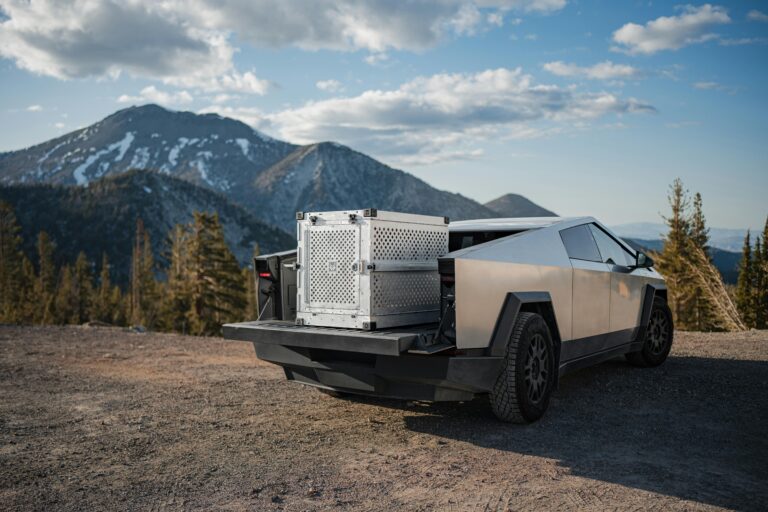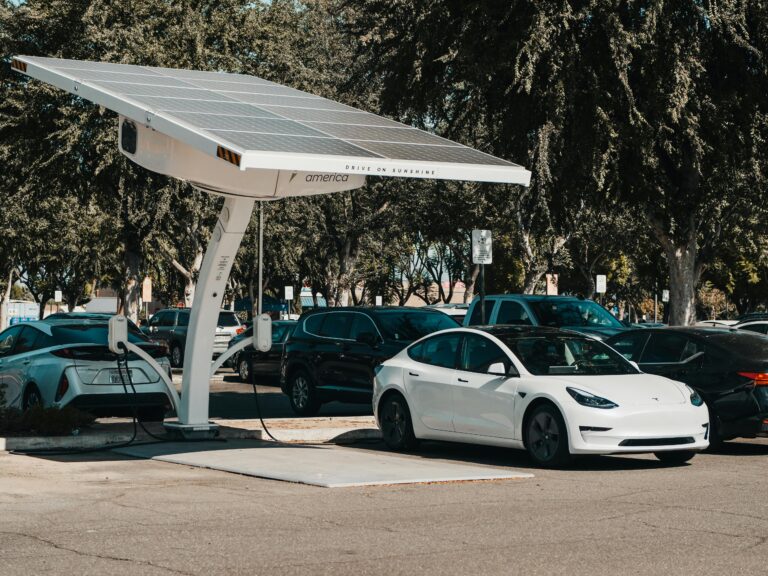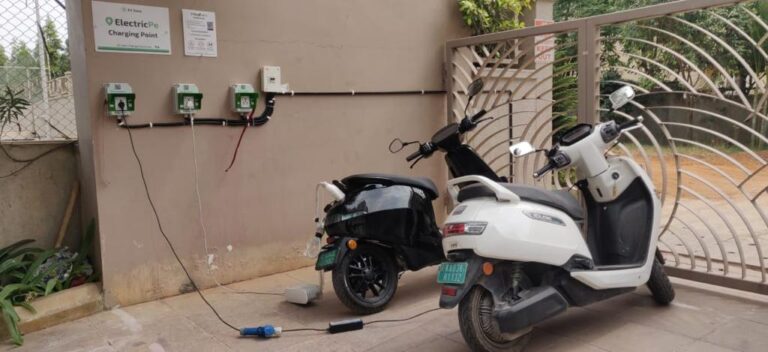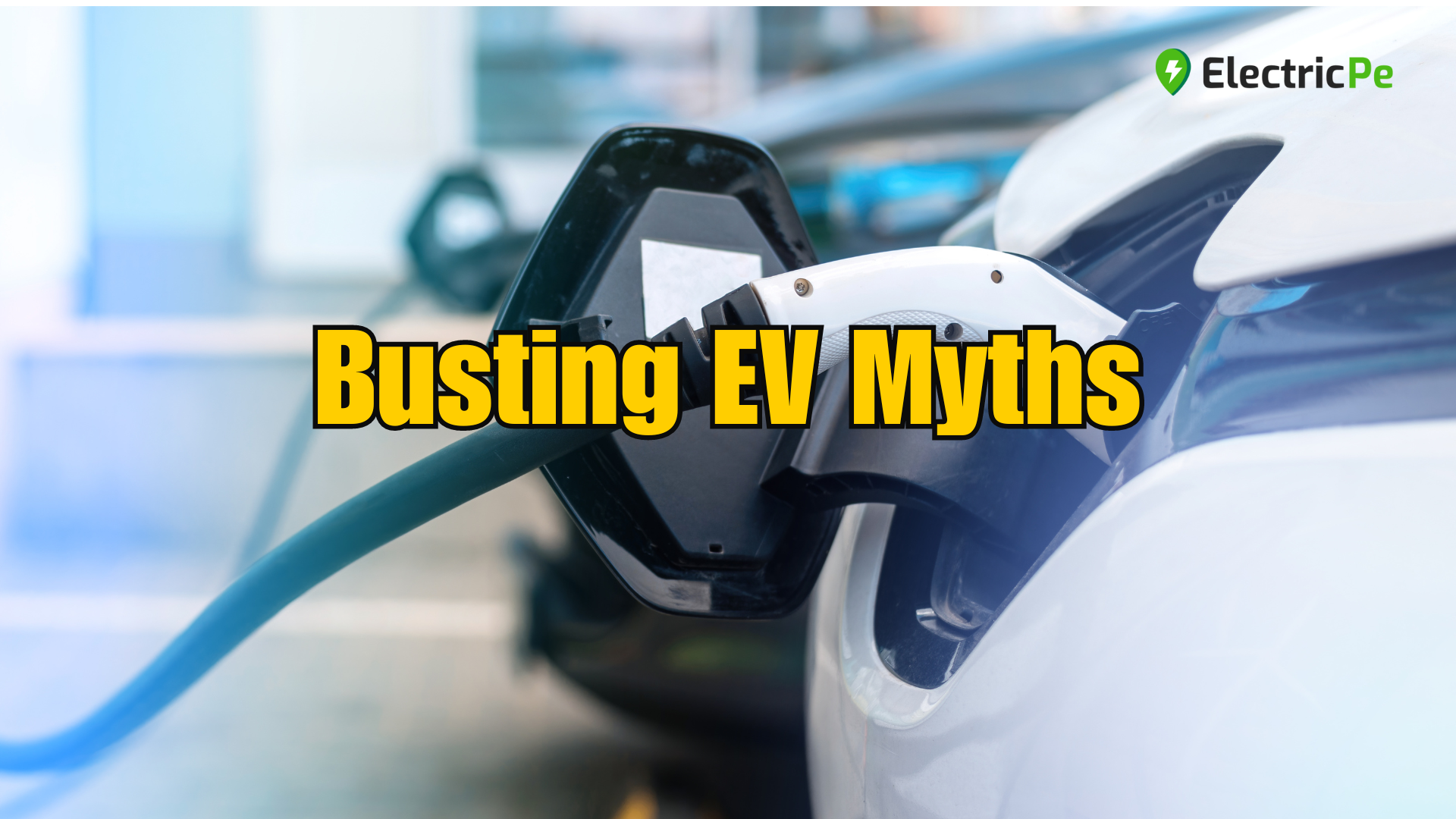Busting Electric Vehicle Myths: The world is en route to adopting electric mobility as its mainstream commute, with an increasing number of automobile giants entering the EV market.
EV adoption has seen a steady increase globally in the past decade, even in the luxury and performance segment. While petrolheads complain that it doesn’t have a V8 under the hood, electric vehicles have been outperforming (most) sports cars as well.
Yet, electric vehicle myths still linger on, planting doubts in the minds of many prospective buyers. Let’s look at the most common myths around EVs posed as facts.
#5 Electric Vehicle Production Has Greater Environmental Impact

The argument stems from the fact that battery production requires a substantial amount of energy. While this is true to some extent, claiming that electric vehicles are not environmentally friendly would be inaccurate.
Here’s why: Electric vehicles produce zero direct emissions. Although their production consumes more energy than that of an ICE vehicle, the latter continues to harm the environment throughout its lifetime.
Therefore, the potential greenhouse gas emissions of an ICE vehicle begin with its production and persist until the vehicle is scrapped, whereas for an EV, most emissions are limited to the production phase, ending once it leaves the factory.
#4 You Have to Replace EV Batteries Within a Few Years
The first electric vehicle was built in 1888, but it took over a century for EVs to become mainstream, largely due to the lack of advanced battery technology at the time. In the past, producing batteries was much more difficult and less efficient compared to manufacturing an ICE vehicle.
Today, however, many battery manufacturers have developed batteries that can last the lifetime of the vehicle, and in some cases, even outlive it.
While replacing an EV battery can be expensive, the need for replacement has significantly decreased over the years, thanks to advancements in battery technology.
#3 It Takes Too Long to Charge

Maybe in the 2000s! Today, with widespread charging networks and fast-charging grids, the average time to charge an electric vehicle from 20% to 80% is around 30 minutes.
Even without fast chargers, most vehicles are parked for long periods, especially overnight. Thanks to advanced battery management systems, EV owners no longer need to worry about overcharging, making the entire charging process more convenient than ever.
#2 There Aren't Enough Charging Networks in India

Charging networks have been steadily expanding in India, with over <add number> players in the market. While rural areas may have fewer public chargers compared to cities, the new PM E-Drive Scheme is significantly boosting the expansion of charging infrastructure across the country.
Currently, ElectricPe offers over 25000 charging points nationwide, making EV charging more seamless than ever.
Download the ElectricPe app to find chargers near you.
#1 EVs Are Prone to Catch Fire
This is, perhaps, the most common electric vehicle myth. You might have seen viral videos of EVs catching fire, and while those incidents are real, how many have you personally witnessed?
Fires in lithium-ion battery-powered EVs occur when the circuit is damaged, causing internal fluids to mix, but the likelihood of this happening is extremely low.
In fact, insurance data shows that traditional vehicles are far more prone to fires, with over 1,500 out of every 100,000 ICE vehicles catching fire, compared to just 25 out of 100,000 EVs. Statistically, EV fires are much rarer than those involving petrol vehicles, despite what some may claim.
Debunking the Myths & Driving the Future
While misconceptions about electric vehicles persist, the facts tell a different story. EVs are not only safer and more efficient, but they’re also shaping the future of sustainable transportation.
From improved battery life to faster charging and robust safety measures, the reality of owning an EV is far more positive than the myths suggest.
As charging networks expand and technology advances, the shift to electric is no longer just a trend—it’s a revolution that’s here to stay.
Follow us on Instagram to on top of the latest EV trends!





